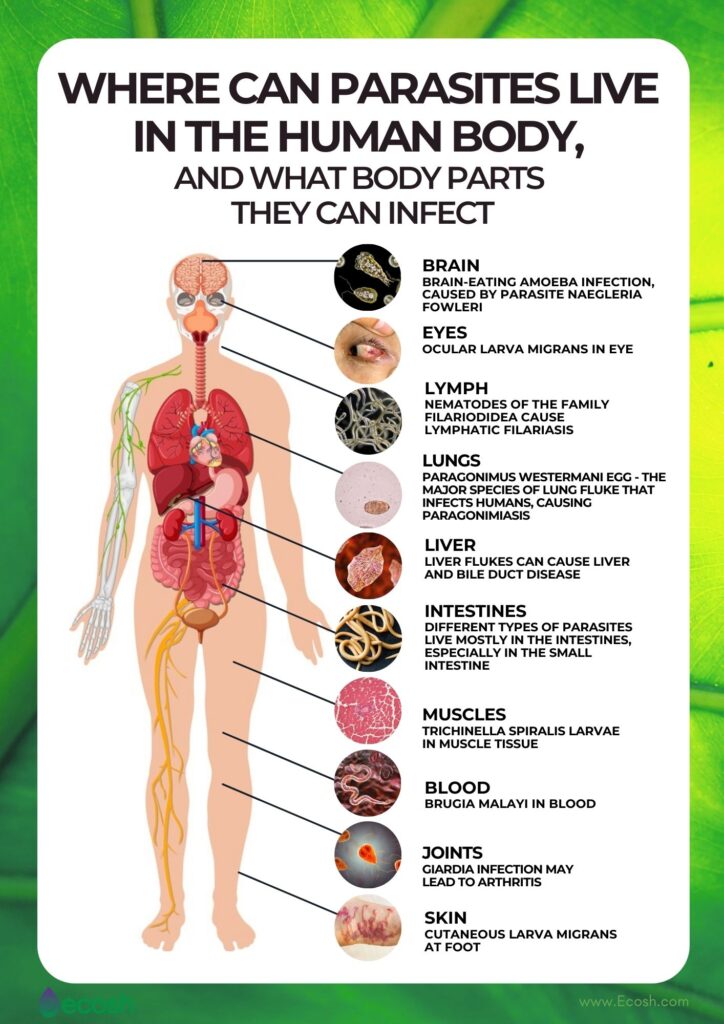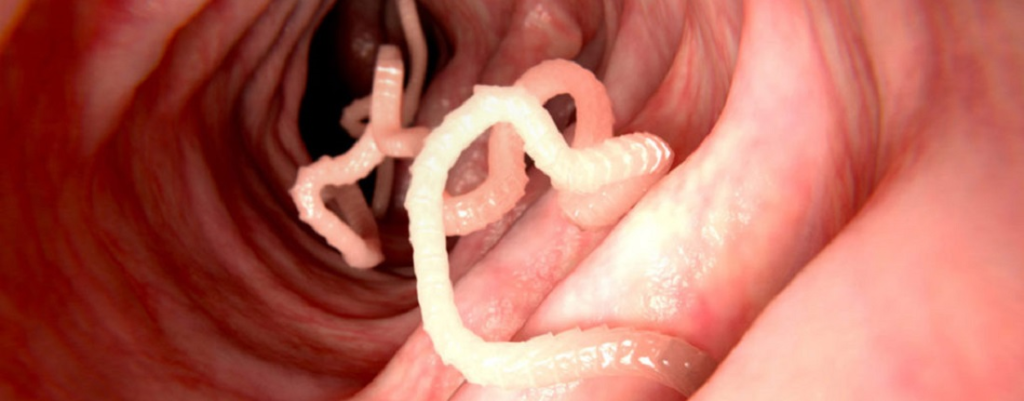INTRODUCTION :- WHAT IS A PARASITE
A parasite is a living organism, which takes /draws its nourishment & other needs from a host; the host is an organism which supports the parasite by providing food & shelter. The study of parasites is termed as parasitology. The father of parasitology is an Italian Francesco Redi (1632-1723). Parasites are organisms which adapt them selves to live in or on other organisms termed host. A larger number of diseases are caused by several living organisms like Bacteria, Viruses, Fungi, Protozoa, and Arthropods & Helminthes.

Almost all the multicellular animals are harbouring at least one protozoan parasite or the other. Parasitology is the area of biology concerned with the phenomenon of dependence of one living organism on another. A misconception about parasitic infections is that they occur only in tropical areas. Although most parasitic infections are more prevalent in the tropics, many people in temperate and subtropical areas also become infected, and visitors to tropical countries may return with a parasite infection.
The parasites are antigenically and biochemically complex, as are their life histories and the pathogenesis of the diseases they cause. During their life, parasitic organisms typically go through several developmental stages that involve changes not only in structure but also in biochemical and antigenic composition. Humans are hosts to nearly 300 species of parasitic worms and over 70 species of protozoa, some derived from our primate ancestors and some acquired from the animals we have domesticated or come in contact with during our relatively short history on Earth. Disease transmitted from animals to man are known as zoonotic diseases.
Different kinds of Parasites according to places where they live
- Ectoparasite: A parasitic organism that lives on the outer surface of its hosts. e.g. lice, ticks, mites, etc.
- Endoparasite: A parasite that lives inside the body of their host. e.g. Entamoeba hystolytica
- Facultative parasite: An organism that exhibits both parasitic & non-parasitic modes of living & hence does not absolutely depend on the parasitic way of life, but is capable of adapting to it if placed on a host. e.g. Naegleria fowleri
- Accidental parasite : When a parasite attacks an unnatural host & survive. e.g. Hymenolepis diminuta (rat tapeworm)
- Erratic parasite : When a parasite wonders into an organ in which it is not usually found. e.g. Entamoeba in the liver & lungs of humans.
- Monogenetic parasite : The parasite which needs only one primary host to complete its life cycle. e.g. Giardia
- Digenetic parasite : The parasite which needs two hosts i.e. one primary host & one secondary host to complete its life cycle. e.g. Leishmania.
Different Kinds of hosts for Parasites
- Definitive host/ Primary host : A host where the parasite undergoes a sexual method of reproduction.
- Intermediate/ Secondary host : A host where an asexual cycle of development takes place.
- Reservoir host : A host that makes the parasite available for the transmission to another host & is usually not affected by the infection.
- Natural host : A host that is naturally infected with certain species of parasites.
- Accidental host : The host that is under normal circumstances not affected with the parasite
- Symbiosis : Parasites may be pathogenic & non-pathogenic, there is a dynamic equilibrium which exists between the host & parasite of different species and is termed as symbiont and this relationship is called as symbiosis. There are three common symbiotic relationships between two organisms
- Mutalism : Is an association in which both partners are metabolically dependent upon each other & one cannot live without the help of the other, however, none of the partners suffer any harm from the association. e.g. Certain species of flagellated protozoa living in the gut of termites. These protozoans depend entirely on carbohydrate diet, acquire it from termites & in return they synthesize cellulases which is utilized by termites in digestion.
- Commensalism : Is an association in which the commensal takes the benefit without causing any harm to the host. e.g. Most of the normal floras (bacteria) of the human body are commensals
- Parasitism : Is an association where one of the partners is harmed & other lives at the expense of the other. e.g. Schistosoma as endoparasite of man.

GENERAL CHARACTER OF PARASITES
- Parasites are found mostly in moist habitats, some free living species inhabit freshwater & marine environment where as terrestrial species inhabit decaying organic matter.
- Parasites vary substantially in size & shape. Smaller species may be microscopic where as larger species are visible to the naked eye. Protozoan parasites have no cell wall therefore can assume any infinite variety of shapes.
- Locomotion is done by many modes in different species i.e. by pseudopodia, cilia & flagellum in protozoans while in metazoans locomotion is done by muscular contraction & relaxation.
- Parasites derive pre-digested nutrition directly from the host body, hence there digestive system is poorly developed or absent.
- Nervous system of parasites is of primitive type.
- Respiration in parasites takes place through diffusion or general body surface as they reside inside the host where oxygen availability is less.
- Excretion in protozoans takes place through vaccoules where as in metazoans through specialised organs.
- Parasites can be both monoecious & diecious. Protozoans reproduce through asexual method by binary fission where as metazoans reproduce by sexual method.
- Reproduction rate is very high in parasites as they produces high no of eggs in very short time.
- Fertilization is external.
- Development is indirect with immature larval stages which are motile, feeding & independent.
- Cleavage is spiral.
- Presence of protective covering to withstand harsh environmental conditions such as envelope or cyst in protozoans where as cuticle or tegument in metazoans.
- Presence of adhesive structures in parasites to remain at the specific site of infection such as suckers, hooks, rostellum.

List of Parasite and the disease caused by parasite
Here is a list of common parasites and the diseases they cause:
Protozoa
- Plasmodium spp.
- Disease: Malaria
- Transmission: Mosquito (Anopheles spp.)
- Trypanosoma brucei
- Disease: African sleeping sickness (Human African trypanosomiasis)
- Transmission: Tsetse fly (Glossina spp.)
- Trypanosoma cruzi
- Disease: Chagas disease
- Transmission: Triatomine bugs (kissing bugs)
- Leishmania spp.
- Disease: Leishmaniasis
- Transmission: Sandflies (Phlebotomus or Lutzomyia spp.)
- Entamoeba histolytica
- Disease: Amoebiasis (Amoebic dysentery)
- Transmission: Contaminated food and water
- Giardia lamblia
- Disease: Giardiasis
- Transmission: Contaminated water, food, or fecal-oral route
- Toxoplasma gondii
- Disease: Toxoplasmosis
- Transmission: Contaminated food, cat feces, congenital
- Cryptosporidium spp.
- Disease: Cryptosporidiosis
- Transmission: Contaminated water or food
- Trichomonas vaginalis
- Disease: Trichomoniasis
- Transmission: Sexual contact
Helminths
Nematodes (Roundworms)
- Ascaris lumbricoides
- Disease: Ascariasis
- Transmission: Contaminated soil or food
- Necator americanus / Ancylostoma duodenale
- Disease: Hookworm infection
- Transmission: Skin penetration by larvae in soil
- Enterobius vermicularis
- Disease: Pinworm infection (Enterobiasis)
- Transmission: Fecal-oral route
- Trichuris trichiura
- Disease: Whipworm infection (Trichuriasis)
- Transmission: Contaminated soil or food
- Strongyloides stercoralis
- Disease: Strongyloidiasis
- Transmission: Skin penetration by larvae in soil
- Wuchereria bancrofti / Brugia malayi
- Disease: Lymphatic filariasis (Elephantiasis)
- Transmission: Mosquito bites
- Onchocerca volvulus
- Disease: Onchocerciasis (River blindness)
- Transmission: Blackfly bites (Simulium spp.)
- Dracunculus medinensis
- Disease: Guinea worm disease (Dracunculiasis)
- Transmission: Contaminated water with infected copepods
Cestodes (Tapeworms)
- Taenia solium
- Disease: Taeniasis and Cysticercosis
- Transmission: Undercooked pork or contaminated food
- Taenia saginata
- Disease: Taeniasis
- Transmission: Undercooked beef
- Echinococcus granulosus / Echinococcus multilocularis
- Disease: Echinococcosis (Hydatid disease)
- Transmission: Ingestion of eggs from dog feces
Trematodes (Flukes)
- Schistosoma spp.
- Disease: Schistosomiasis
- Transmission: Skin contact with contaminated freshwater
- Fasciola hepatica
- Disease: Fascioliasis (Liver fluke infection)
- Transmission: Contaminated water or aquatic plants
- Clonorchis sinensis
- Disease: Clonorchiasis (Chinese liver fluke infection)
- Transmission: Undercooked or raw freshwater fish
- Paragonimus westermani
- Disease: Paragonimiasis (Lung fluke infection)
- Transmission: Undercooked crustaceans
Ectoparasites
- Pediculus humanus capitis
- Disease: Head lice infestation
- Transmission: Direct contact
- Sarcoptes scabiei
- Disease: Scabies
- Transmission: Skin-to-skin contact
- Ixodes spp. (Ticks)
- Disease: Lyme disease (Borrelia burgdorferi, bacterial pathogen)
- Transmission: Tick bites
- Pulex irritans (Fleas)
- Disease: Flea-borne diseases (e.g., Plague – caused by Yersinia pestis)
- Transmission: Flea bites
Discover more from ZOOLOGYTALKS
Subscribe to get the latest posts sent to your email.


Pingback: TRYPANOSOMA - Classification, Life Cycle and Disease | ZOOLOGYTALKS | 2024